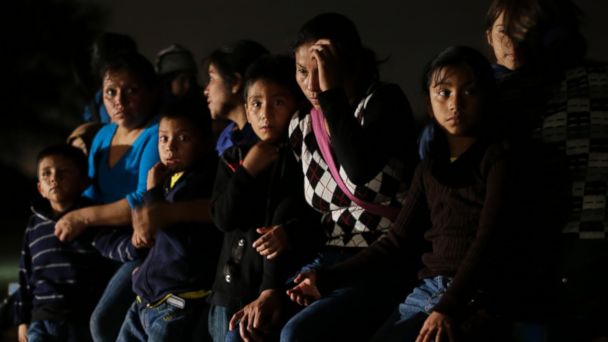Pre-Teens Account for Sharpest Spike in Unaccompanied Child Migrants

(Photo Credit: Eric Gay/AP Photo)
Children crossing the U.S.-Mexico border without parents are increasingly younger, according to newly released figures by the Pew Research Center.
Sixteen percent of the minors who've crossed illegally and unaccompanied in fiscal year 2014, ending Sept. 30, were 12 and younger, compared with 9 percent in the same nine-month period for the previous year, Pew found. The remaining 84 percent of unaccompanied minors who've crossed this year were teenagers.
The change from last year so far represents a 117 percent increase in the number of unaccompanied kids 12 and younger making the dangerous trek.
"The big message here is that when looking at who is crossing the U.S.-Mexico border and being apprehended, a growing number are young children," Mark Hugo Lopez, Pew's director of Hispanic research, told ABC News.
WATCH: National Guard Deployed to Texas Border
Mexico Border Crisis Raises Serious Health Concerns
Mexico Apologizes for Arizona Helicopter Incursion
The data, which look at Customs and Border Patrol number released to Pew through a Freedom of Information Act request, provide the first publicly available detailed portrait of the children surging at the southwest U.S. border in the past few months.
Over 57,000 unaccompanied children have crossed the U.S.-Mexico border illegally so far this fiscal year, more than double the number last year during the same nine-month period.
The majority of children this year have come from Honduras, followed by Guatemala and El Salvador. Mexico, which normally leads, comes in fourth.
The largest share of children 12 and younger comes from Honduras (27 percent), representing a 20 percent uptick in actual numbers from the previous year, according to Pew. El Salvador follows with an increased to 22 percent from 17 percent, followed by Guatemala, which has seen the share of minors 12 and younger double to 10 percent of all unaccompanied minors.
Comparatively, Mexico only had 3 percent of its unaccompanied children crossing the U.S.-Mexico border under the age of 1, the same amount seen last year.
"While this data does not tell us why [Honduras is sending more youth], one possible reason, according to Department of Homeland Security, is the growing level of violence in Honduras," Lopez said. "Today, Honduras has the world's highest murder rate, and San Pedro Sula, where the single largest contingent of kids from Honduras are from, is the world's murder capital."
Family apprehensions - parents traveling with children - have also seen a huge spike this year, according to Customs and Border Patrol numbers, with more than 55,000 apprehensions so far, compared with only 9,300 during the same time last year.
In analyzing the data, Pew also found children traveling with a parent were younger than those who travel without one, 81 percent 12 and younger.
"One pattern in the data is that younger children are more likely to be accompanied by a parent or guardian," Lopez said. "Older children, say age 16, may have left on their own for the U.S. Perhaps to reunite with a family member in the U.S. or possibly to find work."
White House press secretary Josh Earnest said Monday at a briefing that "preliminary data" from the first two weeks of June show apprehensions of unaccompanied children down by nearly half in the Rio Grande Valley sector, going from around 350 per day to 150 per day.
"Now, while the reasons for the reduction in the number of unaccompanied children and adults traveling with children apprehended by CBP cannot be attributed to any one factor," he said, "we do believe that the administration's response and efforts to work with Central American leaders to publicize the dangers of the journey and reinforce that apprehended migrants are ultimately returned to their home countries, in keeping with the law, as well as seasonal flows, have all played a part."
President Obama Monday met with the Homeland Security Council to discuss the unaccompanied children crossing the border.